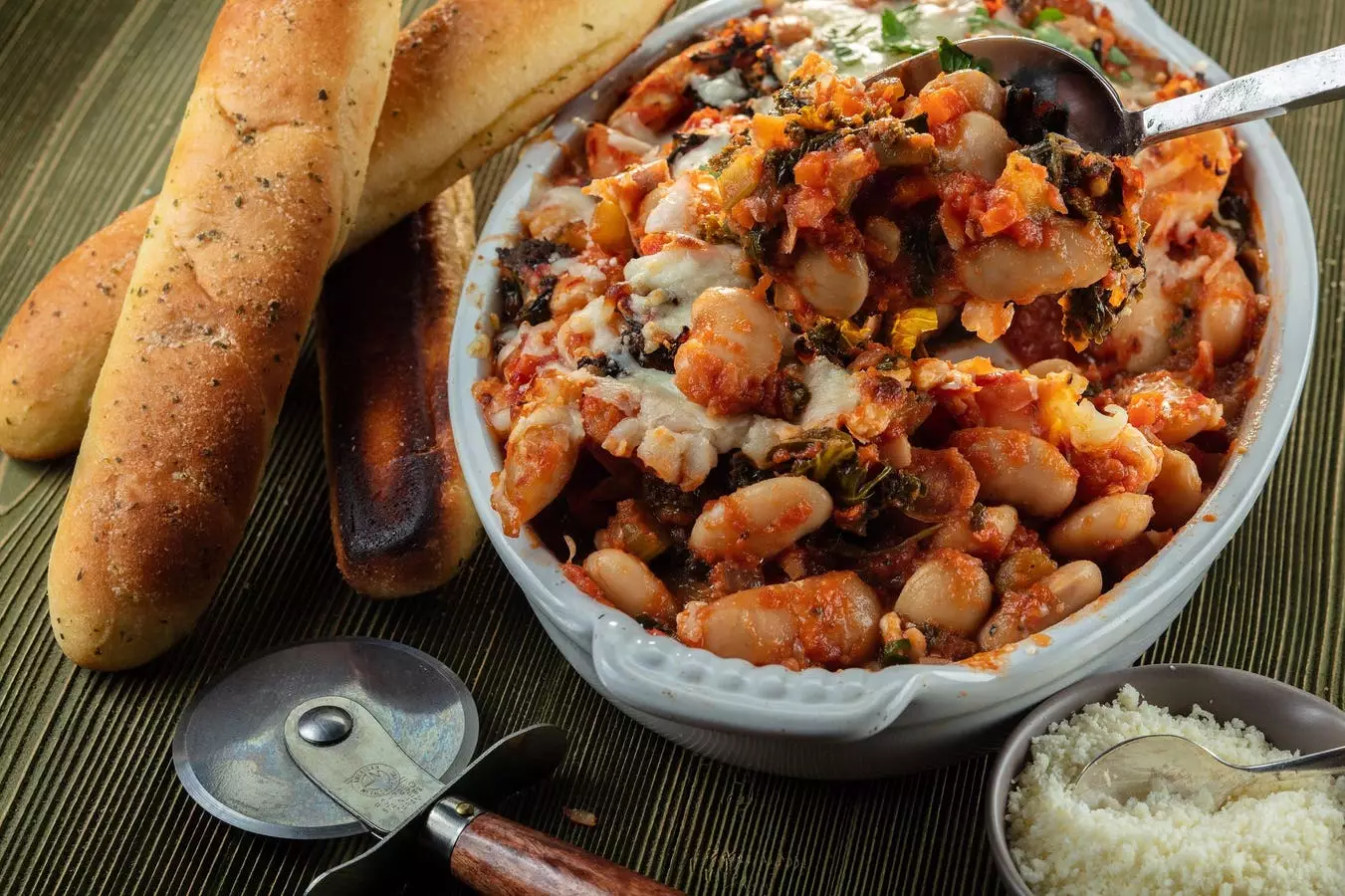Pizza beans, a comfort food delight crafted by Deb Perelman in her 2017 cookbook “Smitten Kitchen Every Day,” typically embody the essence of home cooking. This dish marries the heartiness of Greek-style baked beans with the indulgent flavors typically associated with baked ziti. The ingredient list includes crushed tomatoes, garlic, kale, and a medley of cheese, all coming together to create a casserole that is both nourishing and easy to prepare. These characteristics make pizza beans a popular choice for family dinners and potlucks alike; they’re versatile, adapting well to a range of tastes and dietary preferences.
However, as ordinary as they may seem, pizza beans have recently found themselves entangled in an extraordinary narrative—one that intersects the realms of food culture and true crime. This peculiar turn of events began with the unexpected revelation from TMZ that pizza beans were part of the prison menu served to Luigi Mangione, who stands accused of a shocking crime: the murder of Brian Thompson, the CEO of UnitedHealthcare.
What started as a simple, cozy meal exploded into a viral phenomenon, resonating with online audiences and igniting a flurry of social media activity. The fact that a beloved dish had somehow made its way into the context of a headline-making murder trial instantly attracted public attention. Memes began circulating, with users drawing humor from the absurdity of a dish like pizza beans being served in a maximum-security facility, adding layers to both the crime narrative and the dish’s newfound notoriety. This intersection of pizza beans and true crime not only highlights the dish’s unexpected fame but also serves as a lens through which we examine society’s fascination with sensational stories.
Even as the case against Mangione—who is alleged to be involved in a murder deeply intertwined with frustrations over healthcare accessibility—continues to unfold, public interest has only intensified. This curious detail about pizza beans, a dish celebrated for its down-to-earth qualities, somehow humanizes an otherwise stark and brutal narrative. People begin to engage with the story in a way that fosters empathy; they imagine Mangione’s daily meals while grappling with the complexities of his situation.
Sociocultural Reflections: The Appeal of the Mundane
The phenomenon surrounding pizza beans illuminates a broader cultural trend: our inclination to find meaning in the mundane. The simplicity of a prison menu item juxtaposed with the gravity of a murder trial illustrates how everyday aspects of life can resonate within extraordinary contexts. This peculiar connection urges us to reflect on our curiosities and engage with stories on multiple levels.
Social media plays an integral role in this cultural moment. Platforms have transformed how people interact with news, allowing casual observers to become part of a larger conversation. In the case of Luigi Mangione, the detail of pizza beans was insufficiently mundane to be dismissed. Instead, it became emblematic of the juxtaposition of ordinary life and the sensational nature of crime stories. The mixture of humor and thoughtfulness surrounding this seemingly trivial menu item serves as a microcosm of society’s broader fascination with human stories and their complexities.
The fascination with pizza beans in this true crime saga reveals a profound truth about human behavior: we are inherently drawn to narratives that connect us to the lives of others, no matter how extraordinary those lives may seem. The engagement with Luigi Mangione’s case—through search queries, memes, and discussions—underscores a social tendency to seek empathy and understanding, even when grappling with the harsh realities of life behind bars.
Pizza beans have become a cultural touchstone within this narrative, resonating not just for their flavor profile but also for their role in a larger dialogue about crime, justice, and humanity. They act as a bridge, connecting the public to the more profound themes at play in sensational headlines.
In the end, pizza beans are more than a casserole; they symbolize our collective curiosity about the connections between the commonplace and the sensational. As they transition from a cozy family meal to a point of reference in a high-profile trial, they encourage us to reflect on our perceptions of crime, justice, and empathy. This culinary moment, while bizarre, serves a vital role in illustrating the intersections of culture, crime, and human understanding. Ultimately, pizza beans remind us of the small yet impactful details within our narratives—the very elements that tether us to each other amidst life’s unpredictably extraordinary events.


Leave a Reply